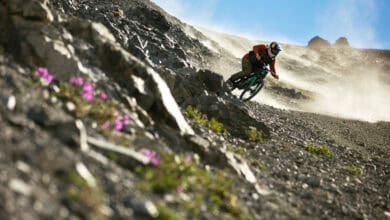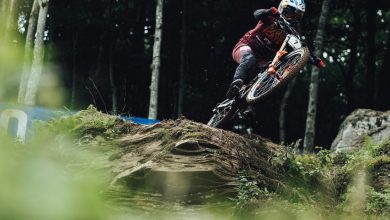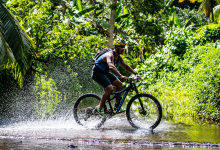TEN Hacks to catch more Trout
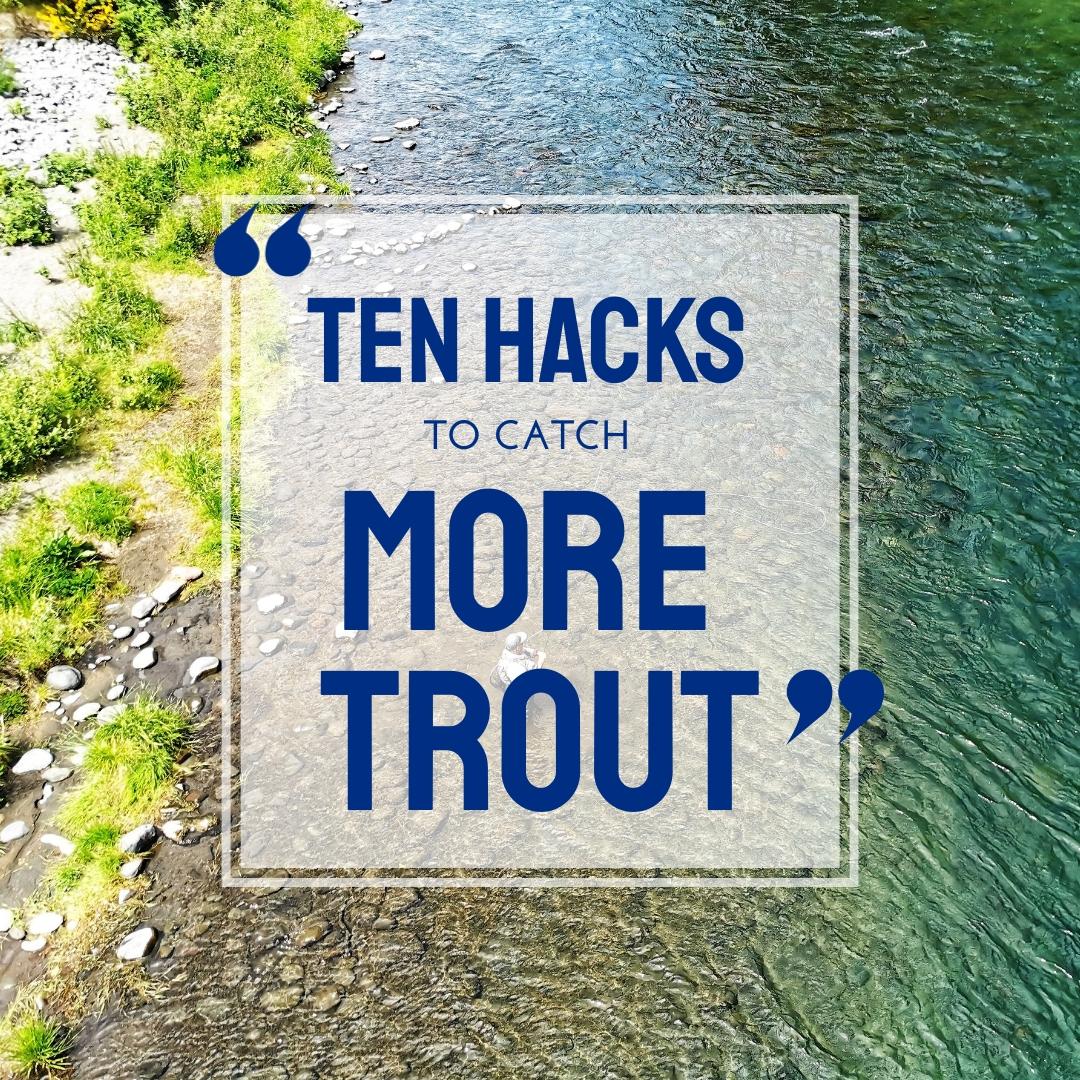
When you live on the central plateaux in Turangi, where you are surrounded by some great trout rivers, what’s is almost as common as good-sized trout are fishing guides. The Tongariro Lodge has over twenty-five on their books alone, in the street where we live there are at least size and another six people who could be. Whether it’s walking the dog, clearing the letterbox, buying gear from your local store, or on the river most guides you meet are happy to share their experience and expertise.
So, I thought I would put this to good use and ask them what their ‘’one tip’’ is, hack or suggestion that would improve everyone’s trout fishing. Some suggestions were repeats, some obvious and some genius.
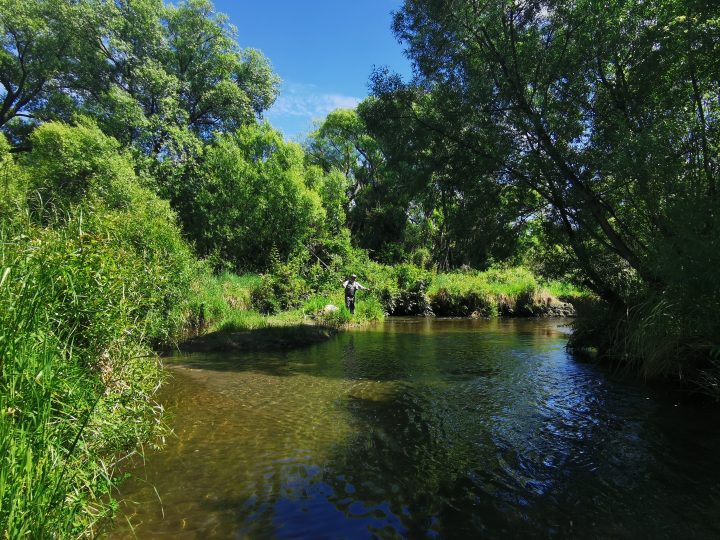
Hack One –
Get a Guide
This was the most common suggestion as you would have guessed. People are hesitant to hire a guide for the day or half a day but in terms of value. You will spend a couple of hundred dollars, get to fish some very cool places, catch some trout, but most of all the guide will give you knowledge that will last you a lifetime. It pays to get a guide if fishing new water or a new region. If you tell them, you don’t want to cross private land then they will take you to places you can always revisit as well. It’s taken them a lifetime to learn what they know and where to go and they are happy to pass that over for a few hundred dollars. Money well spent!
Hack Two –
Like a bad driver Don’t indicate.
Nymph fishing in New Zealand is traditionally done with an indicator, a small wool-based bundle attached to the line in different ways. Some are very brightly coloured. Jim Grossman, a local guide described it as fishmen ‘’casting budgerigars and scaring the s^%t out of trout.’’
Indicators serve their purpose but if fishing in a pool that is deep, with fast flowing current that will give you a big difference in current speed top to bottom the indicator will cause an unnatural drag on the bottom fly. Also, when working pockets of swirling water, shorten up your leader and be more in touch with the fly, the indicator will only upset the drag in the swirling water. If needed you can simply grease the end of your leader and keep an eye on that for any subtle movement.
Hack Three –
Be a Ninja
Every fisherman will tell you tales of fishing in the river only to look down and there will be some trout next to your boot. But the reality is you will catch more fish with stealth than with noise, vibration, and colour. Trout are extremely aware of their surrounding especially if they don’t see humans very often. Big trout are smart, that is how they got big, being picky and spooking easy. Approach every pool and beat as quietly as you can, keep low, some fisherman in shallow streams will fish from their knees to reduce their profile. If you can fish with trees behind, you that’s a bonus and if you do need to walk in the water do it quietly with a shuffling motion not a stampede. Don’t wear a bright red cap for obvious reasons.
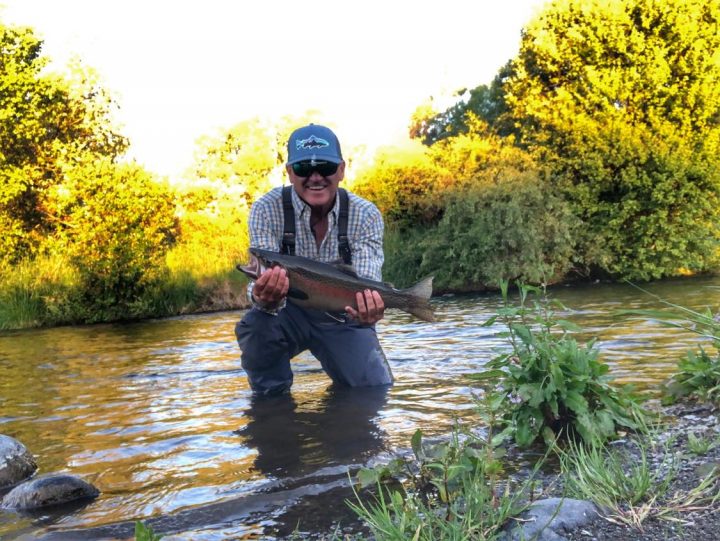
Hack Four –
Move – but not too often
This was told to me not by a guide but by a local who took me to his favourite beat. We separated and moved through the beat together throughout the morning and met up a kilometre down the river, he had caught ten fish I had caught two. We had exactly the same setup. “You rush” (he is a man of few words) he then went on to tell me the need to slow right down in casting and moving from pool to pool. He said it is great to move around and hunt, but you need to give yourself time in each pool, when you feel you have finished in a pool give it ten most casts, it will make a big difference. I did and it does.
Hack Five-
Size is important
Unlike saltwater fishing bigger baits in fly fishing do not equate to bigger fish. The size of a big piece of squid is often an indication of the size of snapper you are going to catch. Fly fishing is not like that. Sure, at times you will catch some trout with a cicada or frog lure but general rule of thumb; the smaller you go the better the result. Use size 16 hook or smaller.
Next time you catch some trout to eat look in its gut cavity and inside its stomach you see how tiny the bugs are (also a good way to see what the trout are feeding on)
Hack Six-
Drift like the dead
This was another repeated suggestion as well by most guides, all pushing how important the drift’’ was. Dead drifting means casting and mending your line so that the fly on the surface or beneath drifts without being influenced by your drifting line.
If casting across a current, you need to learn to mend- there are loads of YouTube clips, just google it if you are not sure. But in simple terms cast upstream, keep you rod tip high and take out as much slack as you can off the water, as the fly passes you simple flip the bending line up stream – called a mend, as quietly and gently as possible – trying not to disturb the indicator or flies and follow the fly/or indicator with your rod top and feed out line.
A simple rule of thumb is if your indicator is flying over the surface leaving a wake like a small motorboat, you don’t have it right.
Hack Seven
Your local goldmine
Your local fishing shop is a goldmine of information, they know what’s going on and where and are often happy to let you know. They know what flies are working and at what time, river flows and weather patterns. Often those working in the store are guides themselves and as already mentioned they have a wealth of knowledge. The more questions you ask, the more often you go in the more details you will get.
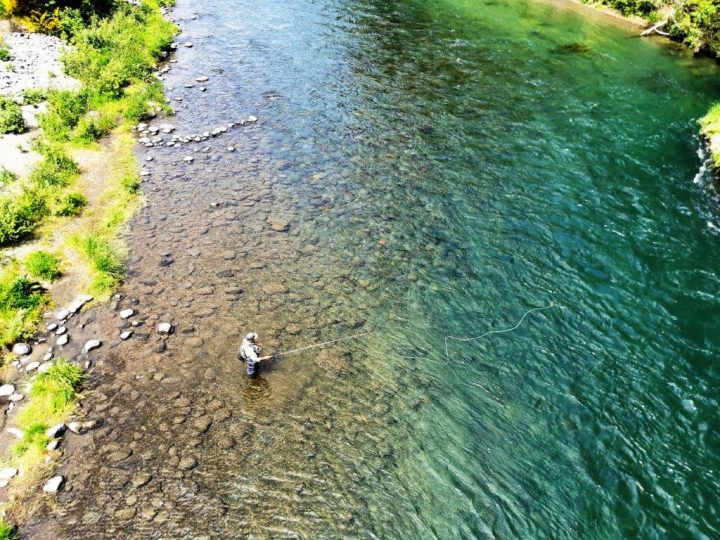
Hack 8
Prepare to Walk
When you settle into a spot to fish look at the trout escape routes; tree roots, rapids, banks, how far can you go down river with them and how far can you go upstream. If you get a fish on of good size, there is no holding your ground you must be prepared to walk in some cases run. This helps tire the fish out as they burn off energy. One guide told me about the best news for a fisherman is when a fish heads up stream in fast water, only bigger fish have the strength to head up into a strong current and it burns their energy quickly, but you still need to follow them as letting out too much line in any direction is a recipe for disaster.
The old rules still apply try to keep you fish at 90 degrees from you and after a high up-stream strike get the side action going to direct the fish as it tires.
Hack nine
Follow the Bubbles
Possibly the most important hack I picked up was ‘follow the bubbles’ – bubbles on the surface normally are like a road of food for trout. They are the tell-tale sign of the trout’s food source and if trout are going to be feeding, they will have their eyes on this area. Since being advice of this I have noted several times if all else fails get your dead drift fly right in the bubble mainstream and it will often pay off.
Hack Ten
Chris Dore
Finally, Ok Chris Dore is not a hack nor is he from Turangi, but he is rated the best guide in the South Island – this is what he had to say:
My top tip as a guide is to really get to know your gear, from your rod, reel, and line, through to the leaders, tippet and accessories.
How hard can you push that rod when needed and how will it perform at different distances, with different amounts of force applied to the cast. How much hurt can you put on that tippet without it popping and how does it perform with a variety of knots. Which dry fly flotant, powder or liquid is best for re-floating indicators or getting dries of different materials riding where they need to be from the get-go.
Which leader material turns over better into the wind or with longer, level sections and which moves within the surface currents with the most minimal of drag?
How will that leader handle shorter tippets or exceptionally long, fine presentation style tippets and what adjustments to the cast do I need to make to achieve the desired presentations with each? Which dries turn over well in the wind or with a decent tungsten nymph following behind, and will those scissor forceps quickly and neatly clip that yarn, or dry fly hackle or should I carry a small pair of scissors?
The trout won’t wait for you to figure this out, so you should become familiar with the kit you carry early in the season and stay constantly aware of how things perform in different conditions, and with differing variables.
Chris Dore www.chrisdore.com
Lastly this is not a hack to catch more trout
After applying a number of these hacks to catch more trout one thing I found was the number I was not getting to the net. I spoke with one of the local guides in the neighborhood fishing shop and expressed my frustration. There is a simple answer he replied, ‘strike harder’ he said it’s the one tip he gives people he guides, the harder you can sink a strike the more likely you are too land. Sure, there is still timing and playing the fish but his exact words were – ‘strike like you are gonna break ya rod’. So that’s what I did, and he was 100% correct, so many more fish to the net.
So that is it ten hacks (and a bonus tip) that will get you more success, more fun, but most of all more trout!




